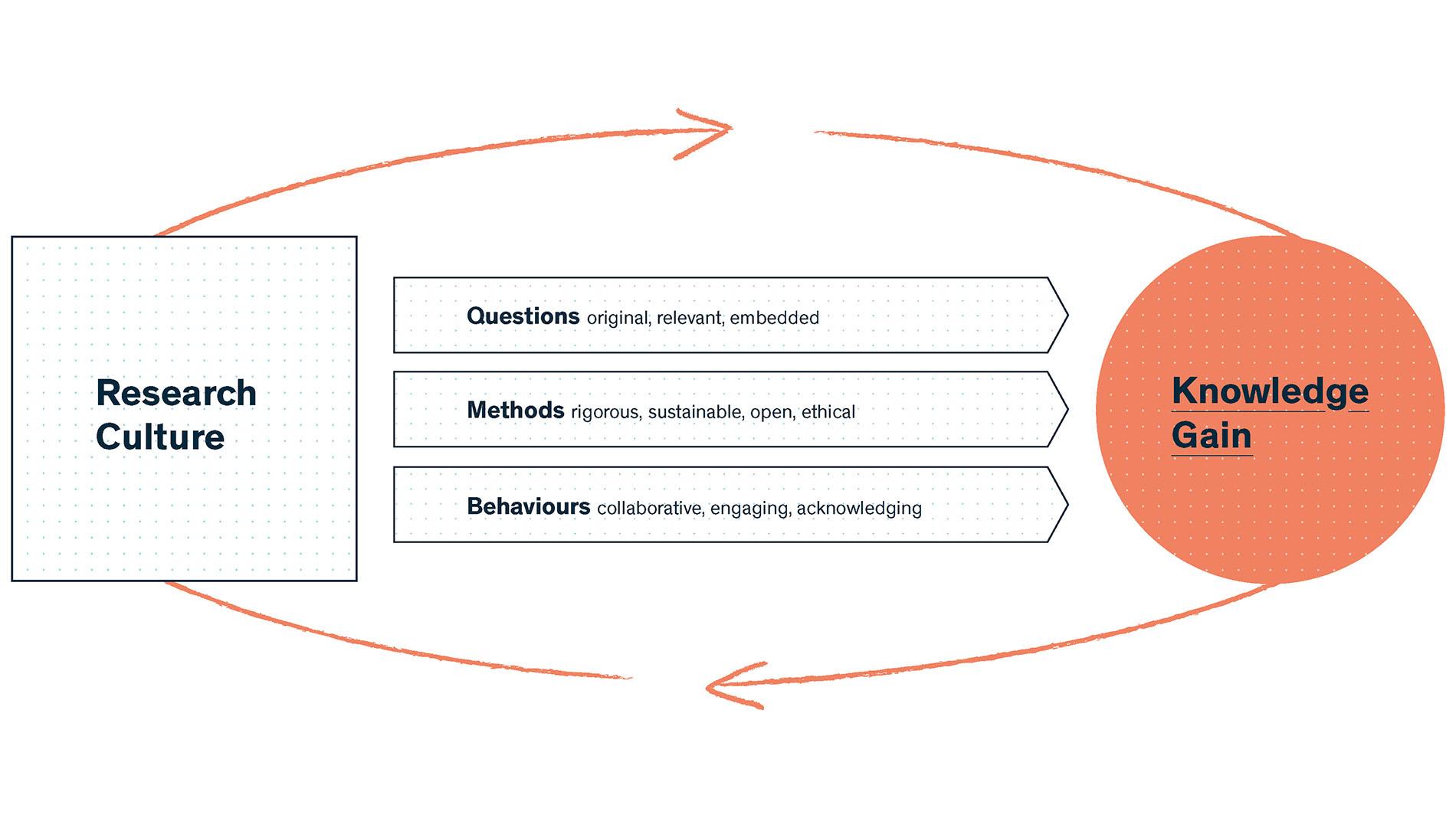The SNSF’s model of excellence

What makes research excellent – this model is our guide
Framing and rationale
By law, the SNSF is asked to promote "excellent research projects". We see excellence as a stepping-stone for the purpose of research, of facilitating knowledge gain for the common good. Excellence is not just a characteristic of research outputs or researchers. It is linked to scholarship practices and can manifest itself at various stages of the research process.
Our excellence model describes the kind of research we wish to fund and the research culture we strive to support, always with the overarching objective of helping to bring about knowledge gain. The model helps us frame strategic decisions and reflect on evaluation criteria and processes. It also describes the qualities we look for in the grant applications submitted for evaluation.
Excellence in research is multidimensional and can manifest itself in various different ways. Our model aims to be inclusive and to capture excellence in all its diversity. It aims to increase consistency and transparency across the SNSF's activities while granting some leeway on a case-by-case basis. For example, different aspects may be weighted differently in different domains, for researchers at different career stages or in different funding schemes.
It is neither realistic nor necessary for any researcher or research project to excel in every dimension at the same time. This model is not an implementation guideline and should not be read like a list of requirements that need to be met for scientific work to be deemed excellent. Instead, its purpose is to help identify opportunities for improvement and invite openness to and recognition of efforts that are outstanding in certain respects.
Excellent research practices evolve over time. Therefore, we want our model to be open and responsive to changes in scientific practices and culture and will revise it regularly.
Three key dimensions have been identified and integrated into a visualization (see below):

Question
- Original: The question is original and has not been asked before, or not asked in this way, or is asked again due to renewed relevance (e.g. for replication), always taking previous and current knowledge into account.
- Relevant: The question is well-delineated and can be answered in its own right; ensuring that asking and answering the question at this time, in this group, with this method and budget has the potential of progress and knowledge gain.
- Embedded: The question and research project is embedded within academia and beyond and attentive to the needs and interests of various stakeholders and environments (e.g. patient groups, society, environmental habitats, animals used in experiments, etc.).
Methods
- Rigorous: The research design is based on well-defined concepts and incorporates appropriate, validated or promising methods to maximize the potential to answer a research question efficiently and conclusively. Data collection, handling, analysis and sharing of data follows internationally accepted high standards.
- Sustainable: The methodological approach considers the costs incurred in relation with the value the project is expected to generate for academia and beyond. The investigators demonstrate awareness of alternative approaches, balancing the choice of method.
- Open: Outputs are disseminated in line with Open Science principles. Investigators actively pursue transparency, reproducibility, reuse of data and cumulation of knowledge.
- Ethical: Investigators comply with laws, policies and ethical standards (e.g. environmental regulations, basic human rights, local and international agreements, research and reporting guidelines).
Behaviors
- Collaborative: Investigators are receptive and open to collaboration during the whole research process. They enable the professional development of project staff, mentees, students, and promote a supportive research culture.
- Engaging: Investigators engage with relevant stakeholders within academia and beyond at different stages of the research process, in a timely manner to maximize the potential for value creation within science and beyond. They actively communicate outcomes to relevant stakeholders (e.g. policymakers, media, economy) to realize broader value.
- Acknowledging: Investigators acknowledge all relevant contributions to a research project (including ideas of colleagues, project staff and contributions by coauthors, collaborators, research funders and non-academic actors). They fairly refer to prior knowledge and previous achievements of others (e.g. by referencing primary publications). They disclose all possible conflicts of interest, including political and financial motivations.